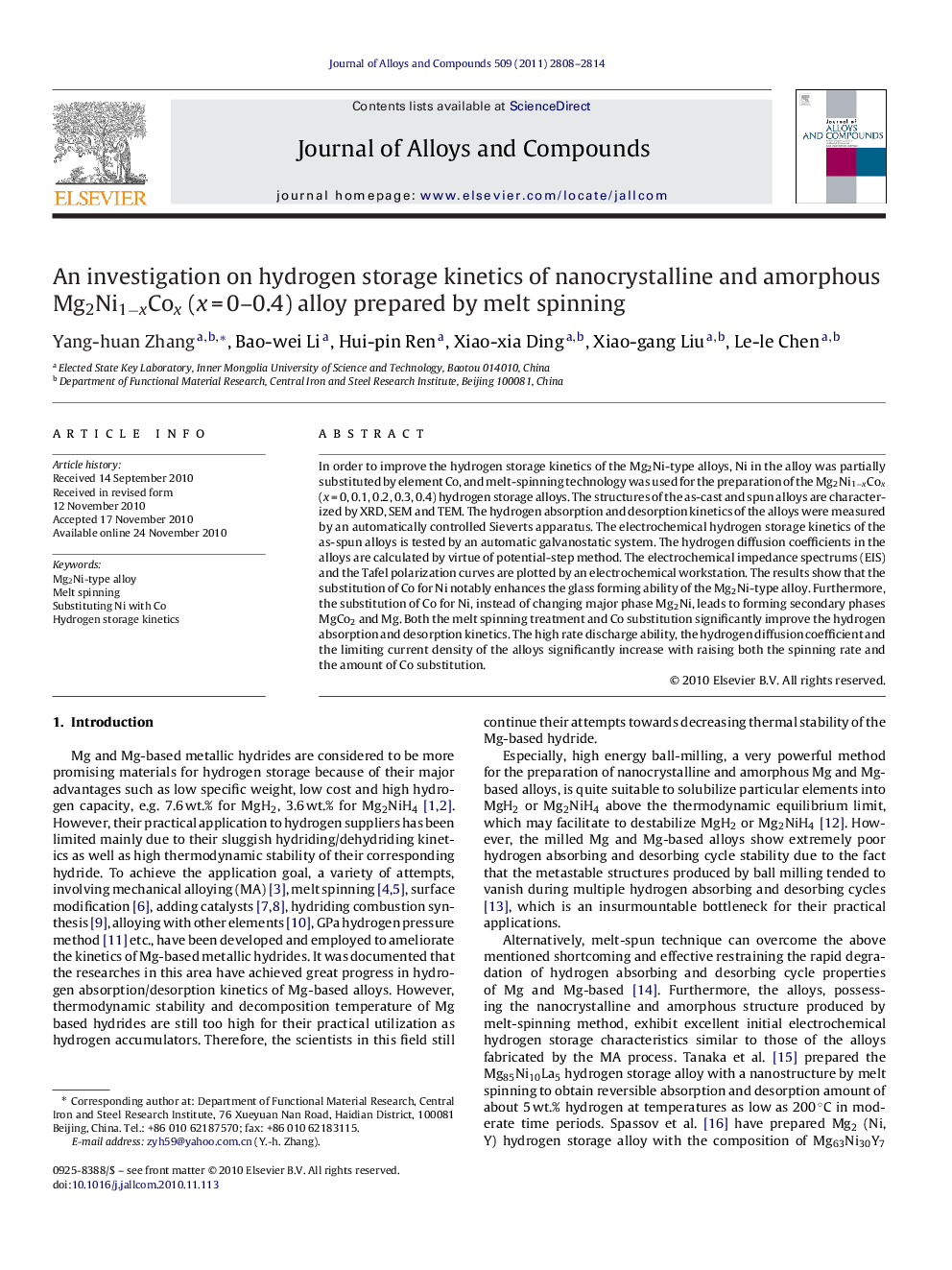| Article ID | Journal | Published Year | Pages | File Type |
|---|---|---|---|---|
| 1617631 | Journal of Alloys and Compounds | 2011 | 7 Pages |
In order to improve the hydrogen storage kinetics of the Mg2Ni-type alloys, Ni in the alloy was partially substituted by element Co, and melt-spinning technology was used for the preparation of the Mg2Ni1−xCox (x = 0, 0.1, 0.2, 0.3, 0.4) hydrogen storage alloys. The structures of the as-cast and spun alloys are characterized by XRD, SEM and TEM. The hydrogen absorption and desorption kinetics of the alloys were measured by an automatically controlled Sieverts apparatus. The electrochemical hydrogen storage kinetics of the as-spun alloys is tested by an automatic galvanostatic system. The hydrogen diffusion coefficients in the alloys are calculated by virtue of potential-step method. The electrochemical impedance spectrums (EIS) and the Tafel polarization curves are plotted by an electrochemical workstation. The results show that the substitution of Co for Ni notably enhances the glass forming ability of the Mg2Ni-type alloy. Furthermore, the substitution of Co for Ni, instead of changing major phase Mg2Ni, leads to forming secondary phases MgCo2 and Mg. Both the melt spinning treatment and Co substitution significantly improve the hydrogen absorption and desorption kinetics. The high rate discharge ability, the hydrogen diffusion coefficient and the limiting current density of the alloys significantly increase with raising both the spinning rate and the amount of Co substitution.
Research highlights▶ The investigation of the structures of the Mg2Ni1−xCox (x = 0, 0.1, 0.2, 0.3, 0.4) alloys indicates that a nanocrystalline and amorphous structure can be obtained in the experiment alloys by melt spinning technology. The substitution of Co for Ni facilitates the glass formation in the Mg2Ni-type alloy. And the amorphization degree of the alloys visibly increases with increasing Co content. ▶ Both the melt spinning and Co substitution significantly improve the hydrogen storage kinetics of the alloys. The hydrogen absorption saturation ratio (Rta) and hydrogen desorption ratio (Rtd) as well as the high rate discharge ability (HRD) increase with rising spinning rate and Co content. The hydrogen diffusion coefficient (D), the Tafel polarization curves and the electrochemical impedance spectra (EIS) measurements show that the electrochemical kinetics notably increases with rising spinning rate and Co content. ▶ Furthermore, all the as-spun alloys, when the spinning rate reaches to 30 m/s, have nearly same hydrogen absorption kinetics, indicating that the hydrogen absorption kinetics of the as-spun alloy is predominately controlled by diffusion ability of hydrogen atoms.
